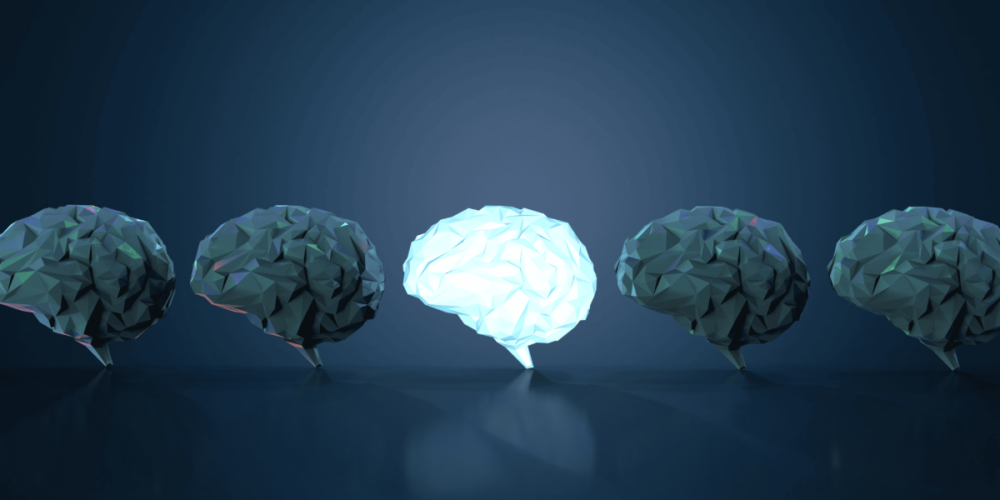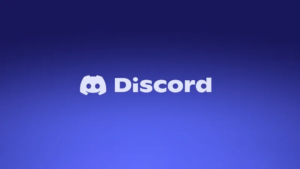Cryptocurrency is an incredibly distracted microcosm, and if you’re part of the carnival, chances are you’re drowning in a deep backlog of articles, newsletters, Telegram and Discord messages, and more– and it feels like you’re being pulled in dozens of directions simultaneously.
And, pardon the assumption here, you have a sneaking suspicion that many of your notes and attempts to make sense of the space are a disorganized jumble of chicken scratch.
No? Just me? Well, if you’re too proud to admit it, let me paint a picture from many conversations with colleagues in the space:
“It feels like I can never have enough information or the right information. But, when I do get a good tip, I’m thrown into uncertainty. I missed out on buying Bitcoin early, then CryptoPunks, and then BAYC– it feels like I’m just learning about crypto for no reason. There are over 1,200 coins and tokens and thousands of NFT projects. I’m always behind on the next ‘big thing.’ I’m not into crypto just for the money, but damn, I don’t want just to be an encyclopedia of half-baked, poorly summarized project descriptions!”
If any part of that resonates with you, dear reader, you may be dealing with some information burnout.
Information burnout isn’t a phenomenon exclusive to our crowd– rather, it’s symptomatic of constantly pinning a finite biological human brain in a sparring contest with a seemingly infinite digital world.
However, information burnout isn’t so much related to all the data points but more so to our frameworks for organizing our knowledge.
Enter Tiago Forte, an expert on personal knowledge management and author. Forte has worked with folks from all walks of life to help them leverage an external system (as simple as a Notes app) to empower their biological brain to perform better and what it does best: creative, abstract analysis.
The following is a two-part series based on our conversation with Tiago and includes a few insights from his new book, Building a Second Brain.
This article will outline the roots of information burnout and articulate a few ways to conceptually turn the tide towards having more control and even fun over your cryptocurrency education journey.
The second article, Frameworks for Organizing Your Crypto Research and Learning, explores specific organization methods and philosophies you can begin using right now.
Why Build a Second Brain (continued)
The crypto initiate’s self-education journey is a barrage of long-term and short-term information. On any topic, one might:
- Read or skim through complex articles and whitepapers explaining a project’s technical underworkings;
- Listen to YouTube interviews and podcasts with the project’s founders or third-party commentary;
- Peruse an endless stream of Crypto Twitter threads, attempting to cleave valuable gems of insight from mountains of misinformation and otherwise articulate analysis without substance;
- Jump between multiple Discord and Telegram channels to participate in live community discussion.
It certainly doesn’t help that many of these projects are deeply complex, urging one to develop a firm understanding of the underlying architecture of the problem before even glimpsing a project’s value proposition.
For example, let’s say we’re interested in the Golem (GNT) project, a global decentralized supercomputer combining the computing power of every machine on its network.
Sounds cool, but what actually is a supercomputer? How is the intensity of a computational calculation determined? How big is the market for a project like this? What is the inherent value of the GNT token?
It’s a rabbit hole.
And then, all the research in the world often can’t explain why a token flies up or down 50% in a few days in a wildly irrational market.
A mistake is to let an irrational market dictate the quality of your research and understanding of the space unless, of course, your subject matter is irrational markets.
We create data points we may never know what to do with, and many of these data points may never be useful.
Make Your Knowledge Accessible: Don’t Become a Digital Hoarder
Tiago articulates information burnout as the “slowly accumulating invisible costs of not being sure whether you have what you need, wondering if you’ve already completed a task before, and weighing the full burden of constantly coming up with good ideas on your fickle biological brain.”
People tend to trap themselves in their own digital hoarding.
In doing so, they create a backlog of tasks for the future version of themselves– either to organize said information or spend excessive time searching for it.
Scarcity and Abundance: Build Your Intuition Rather Than Stifle It
Tiago urges us to apply the scarcity versus abundance perspective to our knowledge.
By default, we typically consume as much information as possible, eternally seeking that one piece of information that will change everything.
In crypto, that information is often some “alpha” or insights that will move a project’s price substantially that have yet to be absorbed into the market. As such, this “alpha” can be incredibly lucrative– but it expires very quickly, trapping the holder into urgency for immediate action.
However, a scarcity mindset for information intake devalues what we already know and have learned. We assign more weight to shaky “alpha” and throw caution (and money) into the wind– and our painstaking research is left to lie dormant in the crevices of our minds, buried by research for new projects.
Good alpha and insights exist– this industry is rare in that access to precious information is more democratized than traditional finance.
However, the issue isn’t about investment returns– it is about what the constant drips of data and distraction do to your fundamental relationship to information itself.
At some point in our lives, we adopt a “default” blueprint for dealing with incoming information, matching data with anticipation, fear, excitement, self-doubt, and so on.
To be clear, personal knowledge management isn’t some magical discipline that will turn you into a better investor– you can still lose the shirt off your back like anyone else– but it’s about pairing action with information intake.
In an industry where new projects and “huge if true” information pops out every few days, Tiago recommends acknowledging the lens from which we’re analyzing our digital world.
“A scarcity mindset is the driver behind FOMO – the fear that what you have and know isn’t enough, and whatever is happening elsewhere must be better,” says Tiago. “While switching from one project or coin to another can be useful in the short term, when you are surveying the possibilities, at some point, you have to commit to one path. An investment portfolio that has no ‘thesis’ and tries to invest in everything won’t grow very much, because it doesn’t have enough exposure to any winners to be able to rise with them.”
The contrast seems to be knowing when you have enough information to have an articulated stance on a matter personally.
“An abundance mindset would be to do the research, but once you have enough information, to take a strong stance about which coins or blockchains you think will succeed, and put your money there,” says Tiago. “Of course, this takes a lot of other things, like wisdom and judgment and risk tolerance, but when it comes to information, we know that it doesn’t increase our odds of success past a certain point of diminishing returns.”
Personal knowledge management allows your biological brain to foster a deep sense of intuition and better judgment.
Of Noobs and Intermediates: Burning Out in Different Leagues
If we cut the “Interested in Crypto” demographic loosely based on experience, we arrive at noobs and intermediates.
Editor’s note: For all intents and purposes here, there are no experts, only intermediates that got lucky or survived long enough to close feedback loops and connect data points with modest predictability.
Noobs battle against sentiment conditioning and misinformation. Mainstream news outlets and clickbait personal finance blogs have historically painted Bitcoin as a shady digital speculative asset.
On the other hand, the space is rife with “trading gurus” and “crypto experts” amplifying FOMO and leading people to believe immediate riches are within grasp if you buy their course or follow them on Twitter.
And then, you have the boring, arduous task of understanding monetary theory, which sediments the underlying problem projects like Bitcoin seek to solve.
For newcomers, Tiago recommends externalizing the educational journey.
“It’s important to recognize that we are all ‘noobs’ in one or more areas of our lives; In any new subject we’re learning, or any new field we’re entering, or any new organization we are working with, we don’t know which sources of information to pay attention to, and likely, therefore, consume too much low-value information, which then feels overwhelming and confusing, which then makes us very ineffective at making good decisions and taking the right actions,” says Tiago. “So it’s not a problem unique to cryptocurrency. There are multiple ways you could “solve” this problem, but my preferred one is to stop trying to absorb or learn new things using one’s biological brain.”
By lessening the burden on our biological brains, Tiago poses, we can fortify our mental reserves and promote mental clarity in times we need it most.
“I instead try to externalize and document what I’m learning in an external place (a Second Brain), where the burden of remembering it all doesn’t affect my peace of mind and wellbeing,” says Tiago. “This may seem like an indirect solution, but the most fundamental “default blueprint” almost all of us need to change before we can change anything else is “keeping it in mind.” Once you stop doing that, many other options for how to interact with information become available to you.”
The intermediates have become conditioned to the volatility and 24/7/365 action of the cryptocurrency industry. As described above, the right piece of information (“alpha”) creates enormous asymmetrical returns, so there’s this voracious appetite and consumption of information– most of which will never be useful.
This perpetuates a negative cycle– we begin ignoring our inner skeptics and assign more credibility to others who seem like they have it all figured out. We numb our intuition and “outsource” our thinking to anonymous Twitter accounts, personal finance pundits, and articulate but otherwise clueless podcasters and journalists.
So, how can intermediates prevent themselves from burning out or letting FOMO take the wheel?
“I’m only on the periphery of the crypto space, with some small investments in Bitcoin and Ethereum mostly to keep myself interested in the topic; but I have a number of friends who are very heavily into it, including working full-time as developers, investors, or content creators, so I have some idea of what you’re talking about,” clarifies Tiago. “As you said, the speed and volume and complexity of the information flow coming out of the crypto world is utterly inhuman. And the fact that an information advantage can so quickly be turned into a financial advantage means it all feels important and urgent.
As such, Tiago’s course on personal knowledge management has become particularly popular among crypto enthusiasts, many of which lose sleep attempting to keep up with their own research.
“I think intermediate-level crypto investors really need to think of themselves as professional researchers, which means putting as much thought into their systems for reading, listening, notetaking, organizing, and writing as an academic would,” says Tiago. “The information flood is never going to stop, and if your methods of managing information don’t work now, imagine how much they’ll fall short in the near future.”
Tiago describes A Second Brain as a means to “escape the reactivity loop, a hamster wheel of urgency, outrage, and sensationalism that characterizes so much of the Internet.”
Tiago recommends putting time on your side.
“Introduce a time delay between when you first notice a piece of content, and when you consume it. I recommend “read later” apps like Pocket, Instapaper, Matter, and Reader to do this,” says Tiago. “All day long I’m saving things to my read later app, and only later when I have more time and am feeling more grounded do I come back and make an intentional decision about what to give my attention to. So much clickbait content is designed to hook you at the moment when you’re tired, stressed, or looking for a distraction from an unpleasant task. By removing that temptation, you’ll find that much, if not most of the content you thought seemed to be interesting at the moment is pointless. You’ll naturally start to move toward more thoughtful, evergreen content.”
Final Thoughts: Clear Your Eyes from Crypto Information Burnout– Make Research Fun Again
CoinCentral has over 1,300 educational articles written since early 2017 on virtually every corner of the cryptocurrency world. As you may imagine, information burnout is a plague for us– we’ve worked diligently to combat it internally, and it’s not always successful.
But, we do have power in numbers– we have dozens of writers and analysts professionally devoted to making sense of the cryptocurrency industry.
However, for the everyday person, making sense of this big mess of thousands of tokens, NFTs, DeFi protocols, and dApps is a very tough task. You simply cannot know everything.
But, you can build an internal framework for knowledge management and foster a healthy relationship with information.
Now that we’ve addressed how and why information burnout is so prevalent in crypto, let’s explore various frameworks for notetaking that will greatly lessen the cognitive burdens that come with being in crypto.



